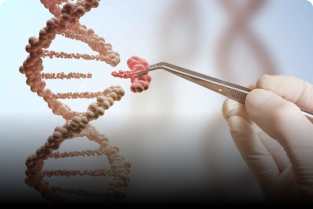The intersection of genetics, machine learning, and nanotechnology represents a fascinating and rapidly growing field of study. These domains individually have immense potential, but their convergence has the power to revolutionize industries ranging from healthcare to materials science. This naturally leads to the question: Does any engineering branch offer a degree that integrates all three disciplines? Let’s explore the possibilities.
Understanding the Three Domains
1. Genetics
Genetics focuses on the study of genes, genetic variation, and heredity in living organisms. With advancements in genetic engineering, scientists can now edit genomes using tools like CRISPR, leading to breakthroughs in medicine and agriculture.
2. Machine Learning
Machine learning (ML), a subset of artificial intelligence, involves creating algorithms that enable systems to learn and improve from data. ML is increasingly applied in bioinformatics, drug discovery, and personalized medicine.
3. Nanotechnology
Nanotechnology involves manipulating matter at the atomic and molecular scale. Applications range from developing nanomaterials with unique properties to creating nanoscale drug delivery systems.
Existing Engineering Disciplines
While no single engineering branch provides a degree exclusively combining genetics, machine learning, and nanotechnology, several disciplines offer overlapping curricula:
1. Biomedical Engineering
Biomedical engineering often integrates genetics and nanotechnology with an emphasis on healthcare applications. Students learn about bioinformatics, medical imaging, and biomaterials, making it a strong contender for those interested in this intersection.
2. Computer Science with a Focus on Bioinformatics
A computer science degree with a specialization in bioinformatics can provide knowledge in machine learning and its applications in genetics. This field involves analyzing biological data, such as DNA sequences, using computational tools.
3. Biotechnology Engineering
Biotechnology combines biology and technology, focusing heavily on genetics. Some programs incorporate machine learning for data analysis and nanotechnology for applications like drug delivery systems.
4. Nanotechnology Engineering
Nanotechnology engineering programs delve deeply into nanoscale science and engineering. While genetics and machine learning may not be core components, electives or interdisciplinary projects can provide exposure.
Interdisciplinary Programs and Research Opportunities
Several universities now offer interdisciplinary programs or research opportunities that bridge these fields:
- Bioinformatics Programs: These often combine genetics and machine learning, focusing on computational approaches to biological data.
- Nanobiotechnology: A specialized field that merges nanotechnology with biotechnology, including genetic engineering applications.
- Data Science in Genomics: Programs that integrate data science and machine learning to study genomic data.
The Role of Customization
For students interested in combining genetics, machine learning, and nanotechnology, pursuing a customizable degree or taking courses from multiple disciplines is key. Many universities allow students to:
- Select minors or electives from related fields.
- Engage in interdisciplinary research projects.
- Enroll in dual-degree programs.
Future Trends
As these fields continue to evolve, it is likely that more specialized programs will emerge. Universities may develop dedicated degrees or certifications that specifically address the convergence of genetics, machine learning, and nanotechnology.
Conclusion
While no single engineering branch currently offers a degree explicitly combining genetics, machine learning, and nanotechnology, interdisciplinary programs and flexible curricula provide pathways to explore these fields. Students can tailor their education through strategic course selection, research opportunities, and collaboration across disciplines. The future holds exciting possibilities for this transformative intersection, paving the way for innovations that will shape the world.

